Disclosure: Meeple Mountain received a free copy of this product in exchange for an honest, unbiased review. This review is not intended to be an endorsement.
When people talk about cooperative gaming, Castle Panic almost always enters the conversation. When Castle Panic took the stage in 2009, cooperative gaming wasn’t anything new. Reiner Knizia’s Lord of the Rings was arguably the front-runner, having introduced a whole new era of board gamers to the concept 9 years earlier. But, even that wasn’t the first one. Board games which task the players with working together to reach some common goal have been around as early as the first decade of the 1900s.
Regardless, it didn’t take Castle Panic long to solidify itself as a shining example of what cooperative gaming could, and should, be.
As the name implies, Castle Panic is a castle defense game that places the players squarely in the middle of a monstrous invasion. Sheltered within their fortifications in the middle of the board, the players must work together to eliminate the hordes of oncoming monsters before they are able to tear down everything the players have built. With a little bit of hand management, a healthy dose of teamwork, and a whole lot of prayer, they just might succeed.
In this two-part series, we’ll be taking a look at the Castle Panic: Big Box Second Edition (2E). In the first part, I will be discussing the base game, how it plays, and what I think of it. In the second part, I’ll be talking about the expansions that are included in the box.
Setting the Scene
A game of Castle Panic is set up thusly:
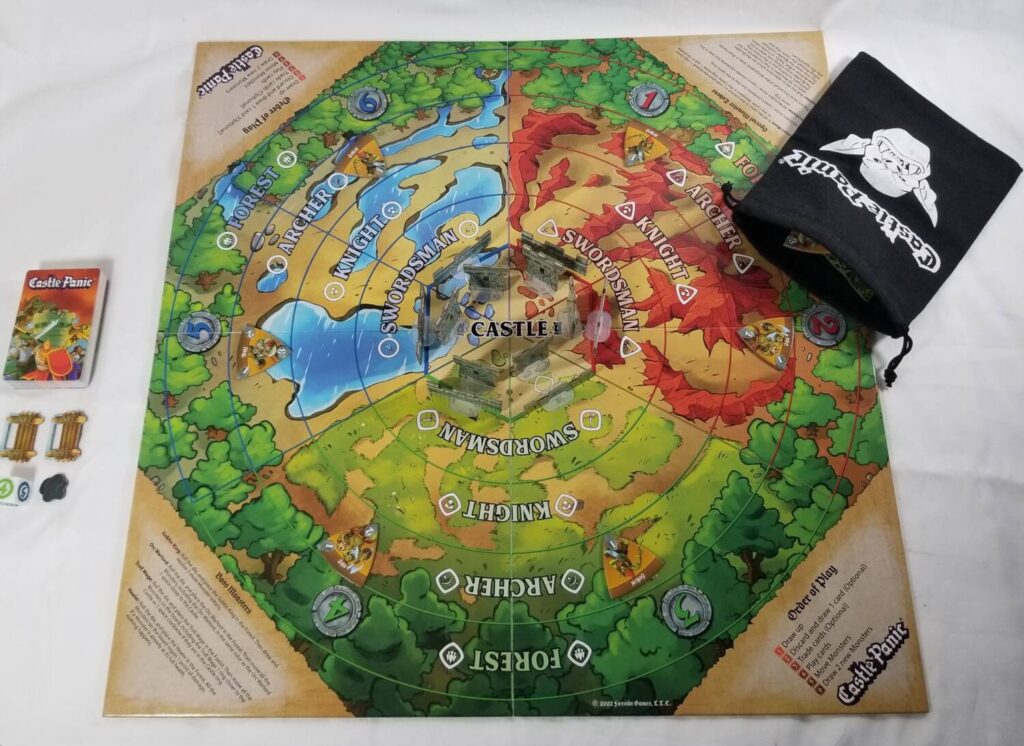
Place the game board between the players. The game board is divided into six pie slices which have been further divided into rings. Each ring bears a label: either Swordsman, Knight, Archer, or Forest. In the center of the board is an area labeled Castle. The tower standees are arranged in a circle in the center of this area, one tower per pie slice. Then, the wall segments are arranged in a ring around the towers, one wall segment per pie slice. Each pie slice corresponds to a specific number and color.
Next, shuffle the deck of cards and deal a hand of cards to each of the players, the amount determined by player count. Then, the board is seeded with several monster tokens. The remaining monster tokens are placed into the drawstring bag (which only exists in the 2E, at least for now). Set aside the die, the Tar token, and Fortify tokens. These are needed by specific cards.
Finally, select a start player and you’re ready to go.
NOTE: The Castle Panic Big Box has several modes of play: the fully cooperative mode (the subject of this review), Master Slayer (a semi-cooperative mode wherein the players collect the creatures they’ve slain as trophies and compare these at the end of the game to determine who did the best), Overlord (a one-against-many mode in which one player controls the monsters and attempts to overcome the other players, who stand against them), and the Solitaire mode. Even though this review is focused squarely on the cooperative experience, except for a few small tweaks here and there, the mechanics are largely the same for every other mode.
The Ever-Turning Wheel of Chaos
At the beginning of a player’s turn, they will first draw cards to have a full hand. Then, if they wish, they may discard one of their cards and draw a new one to replace it. Next, they are allowed to trade a number of cards with other players. The number of allowed trades and the amount of cards that can be traded are determined by player count. This trading phase is arguably the most important phase of the game. This is the phase where all of the table talk and strategizing occurs.
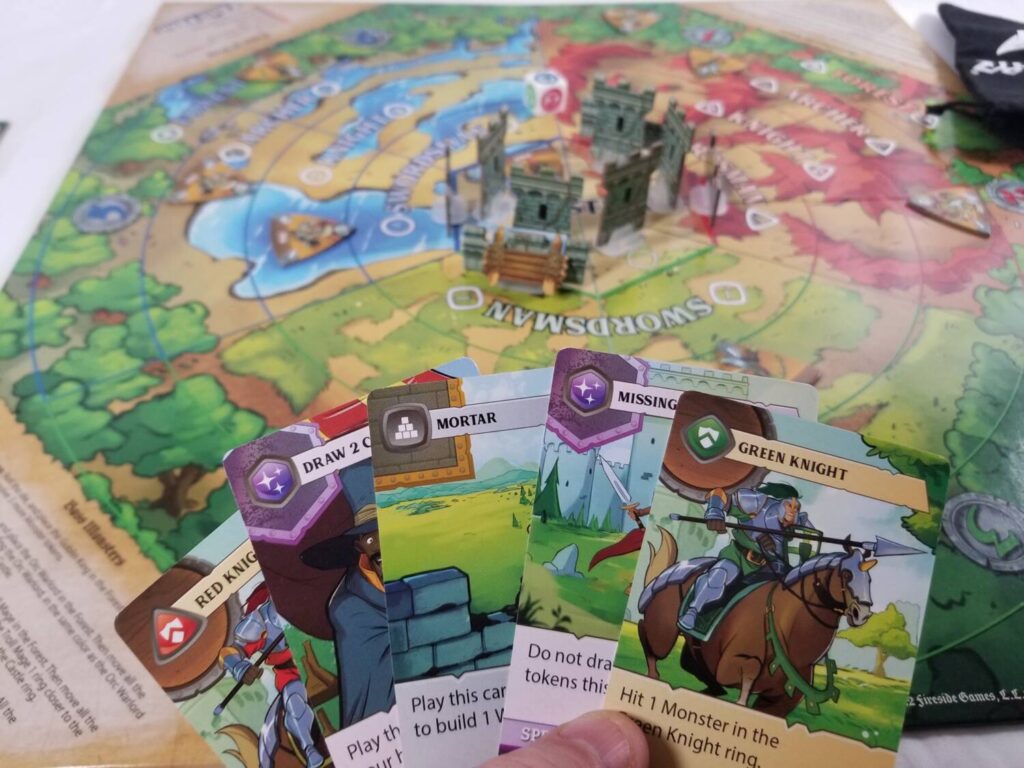
After trading cards, the player can then play as many cards from their hand as they wish so long as they are able to carry out the effects of the cards played. You can’t just play a card to get rid of it and make room for different cards during your draw step in the next round.
After the card play, any monsters that were not slain move closer to the castle. Once a monster reaches the Castle ring, it will destroy the wall segment that occupied the space it attempted to move into (if there was a wall), and take a point of damage. Otherwise, it moves into the Castle ring unimpeded and destroys a Tower, taking a point of damage in the process. On subsequent turns, that monster will move around the ring, in a clockwise position, taking a point of damage from—and destroying—any Tower it comes into contact with.
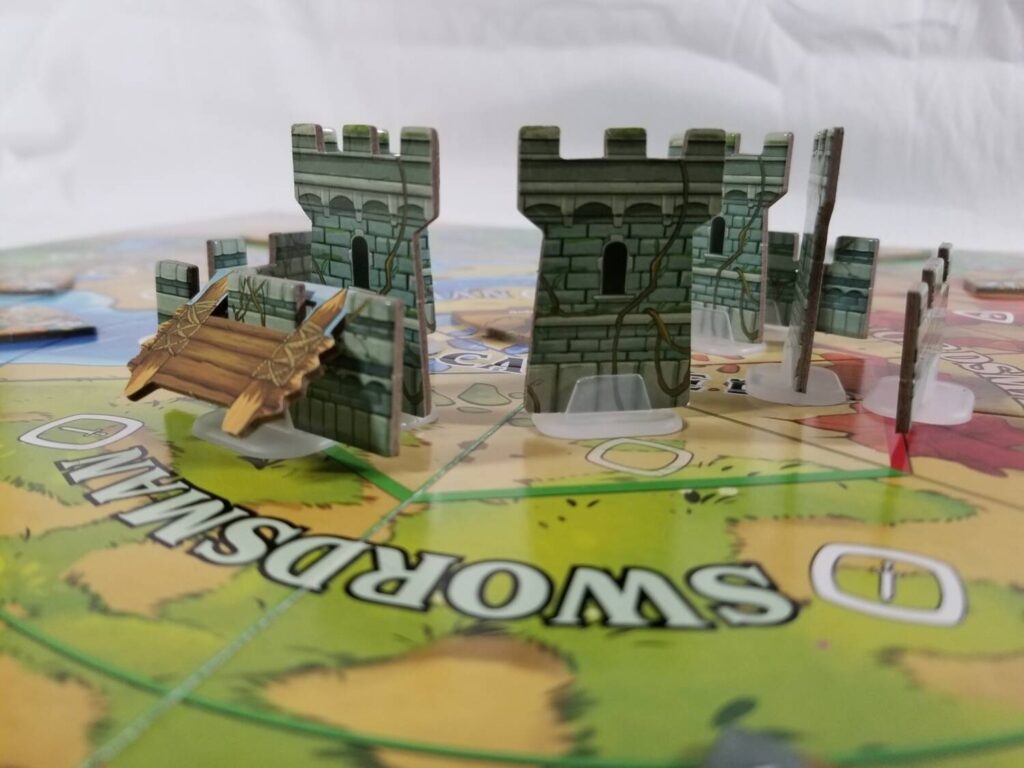
Once all monsters have moved, two new Monster tokens are drawn from the bag and dealt with. Some tokens have effects printed on them that cause things to occur. Others simply place more monsters onto the board. Then, play passes to the next player in line, unless all of the Towers were destroyed. If all of the Towers are destroyed, the game ends in defeat.
The order of play for a game of Castle Panic is always the same, but the challenges the players will need to overcome will constantly change.
The Arrows in Your Quiver
Most of the cards are going to come in one several different flavors: Swordsman (which can only attack monsters in the Sword ring), Knights (which can only attack monsters in the Knight ring), Archers (which can only attack monsters in the Archer ring), and Heros (which can attack monsters in any of the rings). These are further classified by their colors. The Green Knight, for instance, can only attack monsters in the green Knight ring. There are also some “any color” versions of the above which are able to attack monsters in the respective ring regardless of the ring’s color.

In addition to these basic military cards, there are a few others that are incredibly useful in the right situations. There are cards designed to slow down, or outright negate, monster movement. There are cards that boost a unit’s damage. And only three cards in the game are able to deal with monsters that have encroached on the Castle ring. As you can well guess, it is vital to ensure these cards are in the right hands at the right time. Trading, as I mentioned earlier, is VERY important.
If all of the monsters have been defeated and at least one Tower still stands, the players win the game.
Thoughts
Over the past decade that I have been writing reviews, I have played a lot of cooperative board games. Many cooperative games are abysmal failures, either being so easy that the game is a total cakewalk devoid of any challenge, so inconceivably hard that all the fun is sapped out of the experience, or so mired in complexity that playing the game becomes a torturous affair.
And that’s not even taking the players into account. Alpha gamers are a real problem. If you’ve ever been on the receiving end of someone else trying to dictate your every move, then you know exactly what I mean. Being told what to do, being made to feel like an idiot for wanting to try out some suboptimal strategy, is the antithesis of fun. Cooperative games, if not handled properly, tend to foster this kind of gameplay.
Having played so many co-ops, I’ve realized that when it comes to designing a cooperative game, it’s tough to get it right.
That’s why Castle Panic has such a steadfast presence. Castle Panic gets it right.
Castle Panic is a straightforward game to teach and play. That’s one of its strongest selling points. Turns are intuitive and go by quickly. The mob AI doesn’t require a spreadsheet. Everything moves in a very predictable fashion which makes it easy to strategize, and there’s a lot of that going on.
Castle Panic encourages table talk. None of your information is hidden; everyone knows what cards you’re holding and you know which cards they have. Trades are rarely ever simple. Some are made with the idea of the next person in line taking the card they just received from you and handing it off to someone else. Everyone remains engaged. Everyone’s got something to offer, and it’s a group effort to determine what the best course of events should be. And because of that, it discourages alpha player behavior.
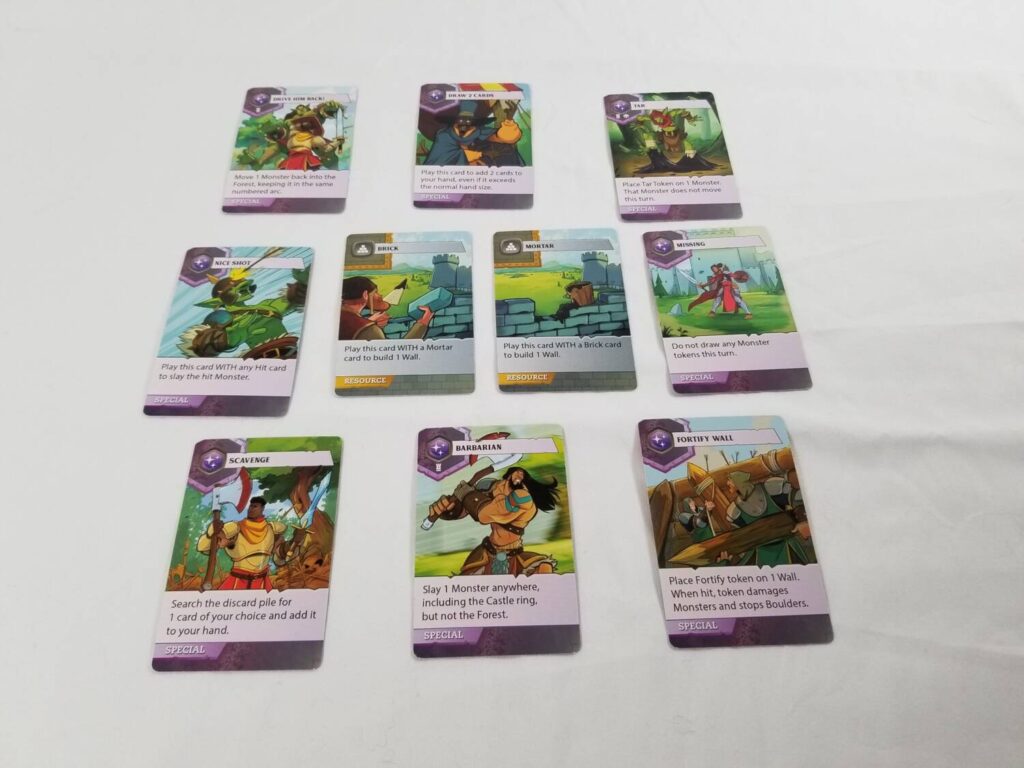
Castle Panic’s simplicity belies the challenging gameplay that dwells within the box. I have yet to play a game of Castle Panic where it didn’t come down to the wire, where one card draw, good or bad, would determine our fate. When we lose, we lose knowing that we put up a good fight and did the absolute best we can. When we win, it’s a glorious feeling.
One of my fondest gaming memories is tied to such a victory. There we were, our walls destroyed, down to a single tower, with monsters closing in. All seemed lost. After formulating a strategy and making the requisite card trade, our only hope was that the active player’s discard would result in a very specific card draw to replace it. If the card they drew was anything other than the one we were hoping for, we’d lose. And so we waited in breathless anticipation as they flipped over the top card of the deck. When the card we were hoping for was revealed, the entire table erupted in cheering and high-fiving.
These are the kinds of moments at which Castle Panic excels.
It is here that I would typically mention any negatives that come to mind. Other than preferring Castle Panic’s original artwork to the artwork of this edition, which is purely subjective, I honestly can’t think of anything negative to say about this stellar game. Castle Panic’s simple, rules-lite, approach works in its favor, creating fun and memorable experiences. While you may not always succeed, when you play Castle Panic, you always win.






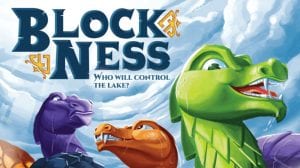
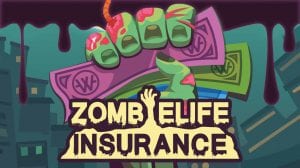




I owned a copy of the original Castle Panic. I got the expansions. Love the game.
I did not get the bog box you have here. I did back the deluxe wooden edition on Kickstarter. If only that had gone the way I hoped. 🙁 I am hoping to get the corrected stuff from that campaign at some point. We’ll see.
I have a box now that is 4x the size it needs to be. I might be in the market for a box from the bog box edition, just to slim the shelf-space down. Castle Panic is a great game. The desire to take up an acre of land with the box really sours me on the whole thing, though.